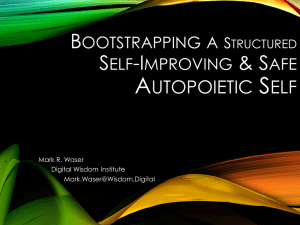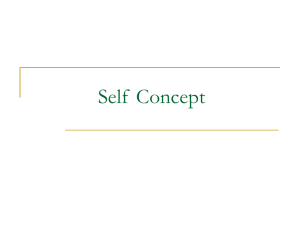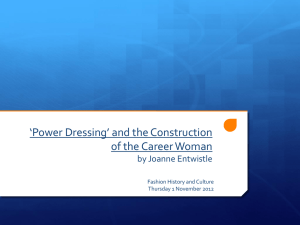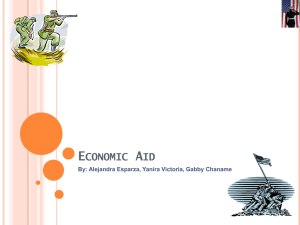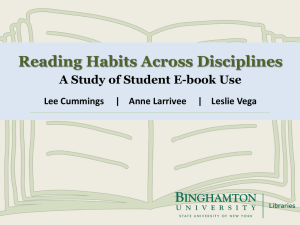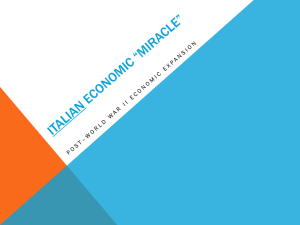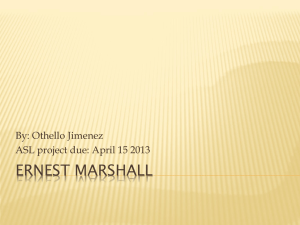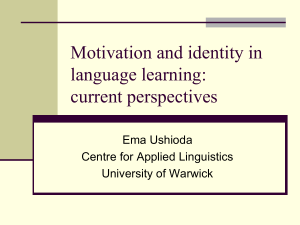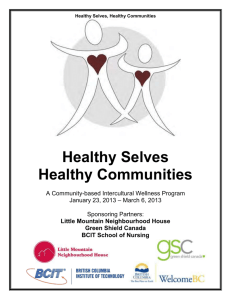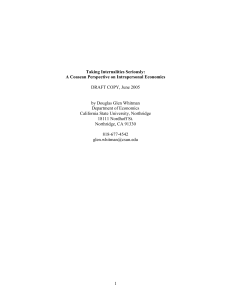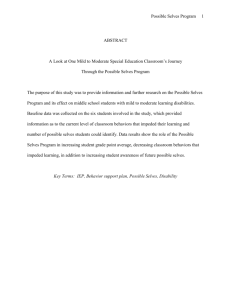Worklife and Mental Health for Aboriginal Youth
advertisement
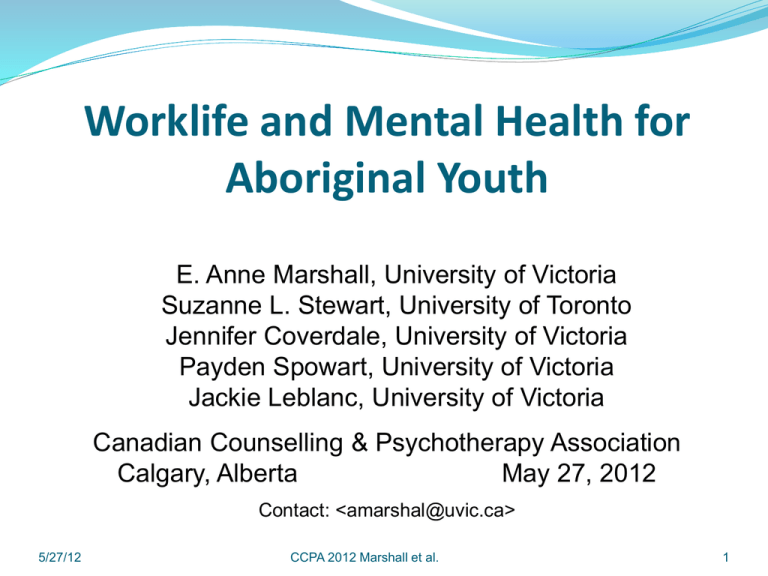
Worklife and Mental Health for Aboriginal Youth E. Anne Marshall, University of Victoria Suzanne L. Stewart, University of Toronto Jennifer Coverdale, University of Victoria Payden Spowart, University of Victoria Jackie Leblanc, University of Victoria Canadian Counselling & Psychotherapy Association Calgary, Alberta May 27, 2012 Contact: <amarshal@uvic.ca> 5/27/12 CCPA 2012 Marshall et al. 1 The Challenge: Employment rates for Indigenous youth In the 15-24 year old category, unemployment rates are 3 times higher for Aboriginal young people The rate of unemployment for First Nations living on reserve is 23.1%; almost double compared to those living off reserve at 12.3% In 2010, 45% of Aboriginal youth were attending school Mental health difficulties affect about one in five youth and young adults (20%); the rate is higher for at-risk and Indigenous populations (30 - 60%) 5/27/12 CCPA 2012 Marshall et al. 2 Walking in Multiple Worlds Nationally funded research/development project Two sites: Toronto, ON and Victoria, BC Our question: “What are the supports, challenges, and obstacles experienced by Aboriginal youth and young adults in finding and keeping work?” Community partners Group and individual interviews Story maps and Possible Selves maps Community Workshops and knowledge sharing 5/27/12 CCPA 2012 Marshall et al. 3 Group Interview Themes Four meta-themes Work Experience “I handed out tons of resumes but I’ve only worked for my Band in the summer student program...no one else called me back” Relations “Yeah, my Uncle called me up and said, ‘I got a job for you’ and I took it.” Culture “Our culture is nonstop. You’re hearing it, you’re seeing it, you’re experiencing it.” Education “the program had the cultural catch that I needed in order to feel really sound and to really feel like I was here.” Mental health, confidence, and self-efficacy impacts described throughout the interviews 5/27/12 CCPA 2012 Marshall et al. 4 Individual Interview Themes Work experience Indigenous culture Family and relational support systems Community connections Discrimination and oppression Ignorance Mental health and well being throughout 5/27/12 CCPA 2012 Marshall et al. 5 Implications Support youth to transition from community based student and/or band-supported employment programs into the work world Teach young people to identify and translate skills learned in community cultural service and volunteer work into job skills for their resumes Recognize the relations who facilitate these young peoples’ work life journey Offer education and career programming that is grounded in Indigenous values, beliefs & practices EDUCATE non-Indigenous population 5/27/12 CCPA 2012 Marshall et al. 6 Practical tools & approaches Talking circles Elders, mentors, and community champions Community events & training Story Maps Possible Selves Mapping Process (PSMP) Guiding Circles (McCormick et al) 5/27/12 CCPA 2012 Marshall et al. 7 Story Maps – Toronto team Relational strategies and resources are grounded in social values and life contexts Historical and community focus Follow oral traditions Represent values & strengths Provide on-going records 5/27/12 CCPA 2012 Marshall et al. 8 Possible Selves – Victoria team Possible Selves (Markus & Nurius, 1986) is a future- oriented and personalized form of self-concept which provides a link between self-concept and motivation Include positive hoped for and negative feared future images of self Are based on a number of salient factors: family and community, socio-cultural and historical experiences, interests, abilities, and media influences Become important motivators for behaviours Markus, H., & Nurius, P. (1986). Possible selves. American Psychologist, 41, 954 – 969. 5/27/12 CCPA 2012 Marshall et al. 9 Seven Steps in the Possible Selves Mapping Process (PSMP) 1. Create a Possible Selves Brainstorm Map. Brainstorm hoped for and feared possible selves (on a brainstorm map or paper) 2. Group and name the hoped for and feared selves 3. Debrief the brainstorm map 4. Identify most wanted hoped for selves and feared selves, plus most likely feared & hoped-for selves (if time) 5. Transfer brainstorm information to the overview map 6. “Things to do right now.” Explore and identify specific steps to achieve hopes and avoid fears. Include others 7. Overall impressions and next steps 5/27/12 CCPA 2012 Marshall et al. 10 Possible Selves Map (young man, 27) Hoped for Selves Feared Selves PhD. – Indigenous Studies Clinical Social Worker / Related helping field Stuck in a dead end job Living and working away from the Island Working with children of residential school survivors Working within my own community No Indigenous aspect to my work Homeless / Broke 5/27/12 CCPA 2012 Marshall et al. 11 Most hoped for.... Relations Most likely. Feared self... Most feared... Most likely. Hoped-for self...
